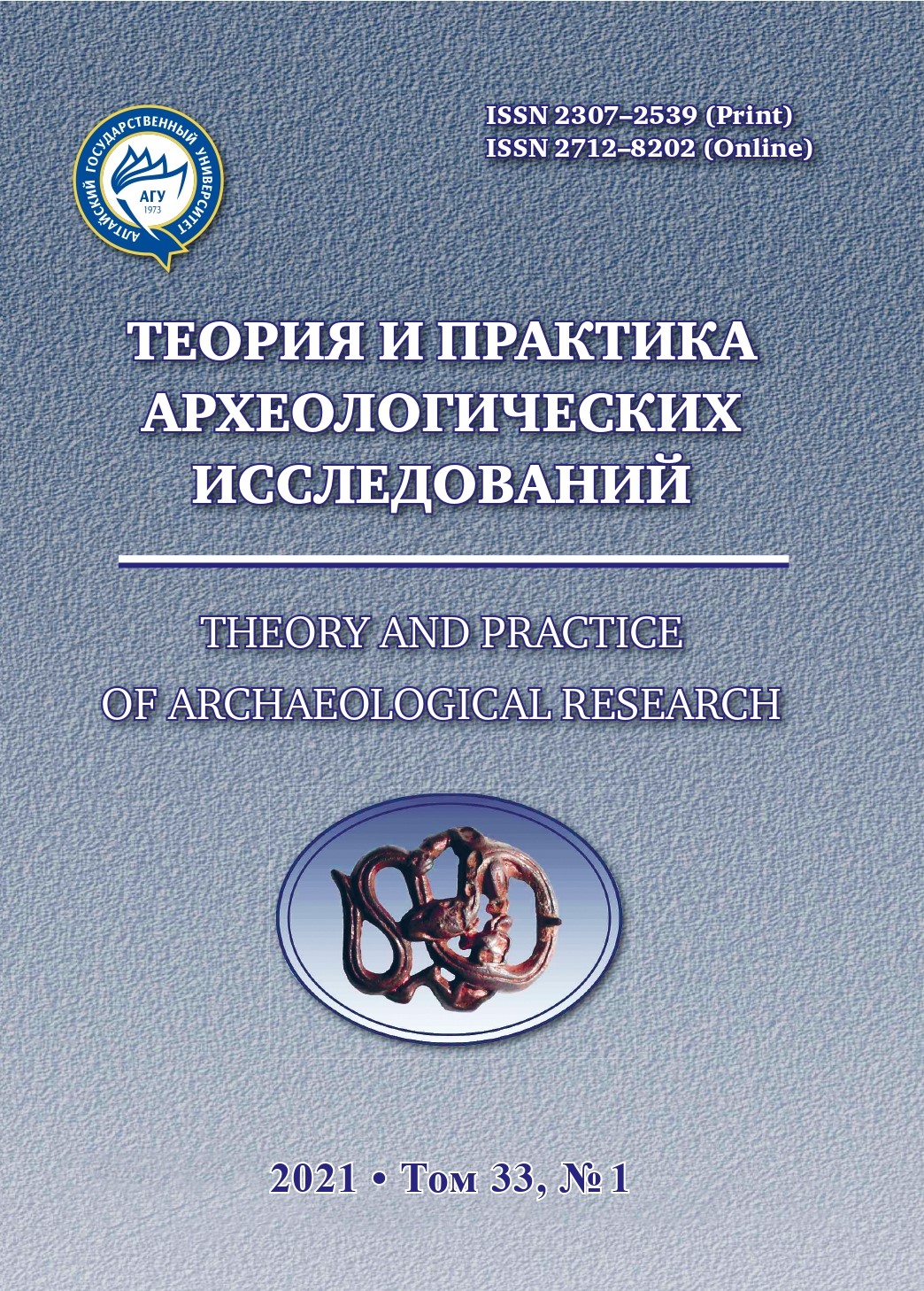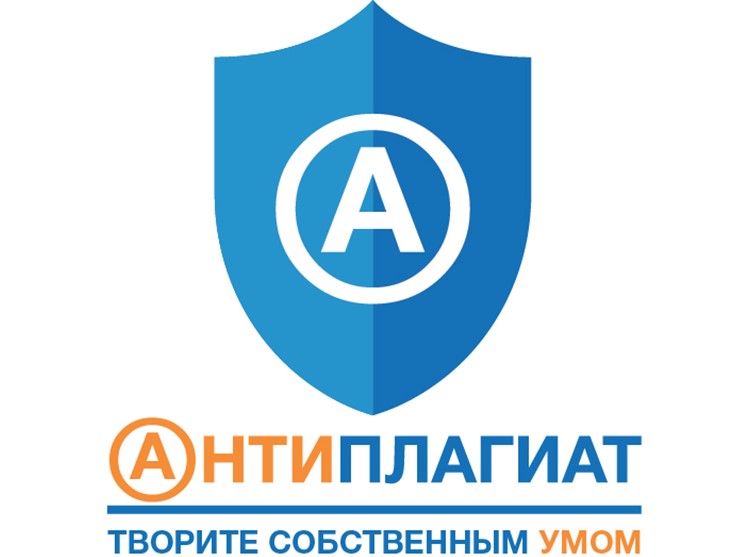THE SOCIAL STRUCTURE OF THE POPULATION OF THE TOMSK OB REGION IN THE HIGH MIDDLE AGES (BASED ON MATERIALS FROM BURIAL GROUNDS)
Abstract
This paper is aimed at reconstructing the social structure of the population of the Tomsk Ob Region in the High Middle Ages. The source base is made up of materials from archaeological excavations of three burial grounds: Astrakhantsevsky burial mound, Basandaysky burial mound, and the burial ground at the mouth of the Malaya Kirgiska River. The composition of grave goods (in terms of quantity and quantity) and a burial structure served as criteria for the analysis. 212 graves of adults and children have been selected. As a result of the analysis, we have identified five adult groups and three children’s groups. The adult groups are as follows. Representatives of group I had the most complete set of weapons: sabers, spears, bows and arrows. Only this group of warriors had a protective suite of armour. There were horses in some graves. We identified one grave of this group in the Astrakhantsevsky burial mound, two in Basandaysky burial mound, and seven in the burial ground at the mouth of the Malaya Kirgiska River. Group II includes graves with rich goods, such as jewelry made of precious metals, precious and semiprecious stones. There are also fragments of silk. There are graves with weapons, horses or their ammunition. Group III is divided into two subgroups: III/1 - cavalry warriors, professionals; III/2 - infantry warriors, hunters and other groups of the population. Group IV includes poorer segments of the population, with a small set of household goods. Group V includes graves without goods. The children’s groups include: I - with rich goods, II - with scarce goods, III - without goods. Attention should be paid to the following circumstances: in several cases we identified persons buried in a mound as relatives or members of the same family. There are interesting observations concerning the location of mirrors. They were found in adult groups I, II, III, IV and children’s group I, II. However, no special group of people authorized to perform religious rituals was identified. This situation is likely to reflect the social reality of that period in the Tomsk Ob Region. The identified adult groups represent the social structure: group I - representatives of local military and administrative authorities; group II - rich people, group III - cavalry warriors, power base (together with representatives of group I, they are likely to constitute the military elite); group III/2 - militia in wartime and hunters, fishermen or herders in peacetime; group IV - poorer segments of the local population, small in size; group V - people without goods, the poor, possibly dependent people. Among children, group I (children of wealthy parents) and group II (children of low-income parents) stand out. As for children without goods, it is quite difficult to explain reasons for such burials.
Downloads
Metrics
No metrics found.
References
Basandajka. Sbornik materialov i issledovaniy po arheologii Tomskoj oblasti [Basandaika. Collection of Archaeological Materials and Studies for the Tomsk Region]. Trudy TGU (T. 98), TGPI 126 [Proceedings of the Tomsk State University (Vol. 98), Tomsk State Pedagogical University]. Tomsk. 220 p. (In Russ.)
Boyarshinova Z.Ya. Pogrebalnyj ritual v basandajskih kurganah [Funeral Rituals in the Basandai Mounds]. In: Basandayka. Tomsk, 1947. Pp. 151–165. (In Russ.)
Vertman E.G., Pletneva L.M. Tehnologii izgotovleniya i himicheskij sostav metalla massspektrometrii s induktivno-svyazannoj plazmoj predmetov torevtiki razvitogo srednevekov’ya iz Tomskogo Priob’ya [Manufacturing Techniques and Chemical Compositions of Metals, Determined by Inductively Coupled Plasma Mass Spectrometry, in Toreutics of the High Middle Ages from the Tomsk Ob Region]. Teoriya i praktika arheologicheskih issledovanij [Theory and Practice of Archaeological Studies]. 2020. No. 2 (30). Pp. 59–70. (In Russ.) DOI: 10.14258/tpai(2020)2(30).-04
Gorbunov V.V. Voennoe delo naseleniya Altaya v III–XIV vv. Ch.I. Oboronitel’noe sooruzhenie (dospeh) [Military Arts of the Altai Population in the 3rd — 4th Centuries. Part I. Defenses (Body Armor)]. Barnaul : Izd-vo Alt. un-ta, 2003. 174 p. (In Russ.)
Dashkovskij P.K., Mejkshan N.A. Elita v social’nom prostranstve kochevogo obshchestva (teoreticheskij i metodicheskij aspekty) [The Elite in the Social Space of Nomadic Society (Theoretical and Methodological Aspects)]. Elita v istorii drevnih i srednevekovyh narodov Evrazii [The Elite in the History of Ancient and Medieval Peoples of Eurasia]. Barnaul : Izd-vo Alt. un-ta, 2015. Pp 11–25. (In Russ.)
Dulzon A.P. Dnevniki raskopok kurgannogo mogil’nika na Basandajke [Excavation Diaries for the Basandaika Burial Mound]. Trudy. TGU (T.98), TGPI [Proceedings of the Tomsk State University (Vol. 98), Tomsk State Pedagogical University]. 1947. Pp. 67–115. (In Russ.)
Zinyakov N.M. Zhelezoobrabatyvayushchee proizvodstvo Tomskogo Priob’ya v XI–XIV vv. [Iron Industry of the Tomsk Ob Region in the 11th-14th Centuries]. Pletneva, L.M. Tomskoe Priob’e v nachale II tys. n. e. (po arheologicheskim istochnikam). Appendix 3. [The Tomsk Ob Region in the Early Second Millennium AD (Based on Archaeological Data)]. Tomsk : Izd-vo TGU, 1997. Pp. 146–164. (In Russ.)
Kradin N.N. Prestizhnaya ekonomika i kul’tura vlasti v kochevyh imperiyah [The Prestigious Economy and Culture of Power in Nomadic Empires] // VIII Mezhdunarodnyj kongress mongolovedov (doklady rossijskoj delegacii) [The 8th International Congress of Mongolists (Reports of the Russian Delegation)]. M. : In-t vostokovedeniya RAN, 2002. Pp. 72–78. (In Russ.)
Ozheredov Yu.I., Pletneva L.M., Masumoto T. Metallicheskie zerkala v muzee arheologii i etnografii im. V.M. Florinskogo TGU: formirovanie i issledovanie sobraniya [Metal Mirrors in the V.M. Florinsky Museum of Archаeology and Ethnography, TSU]. Sbornik muzeya arheologii i etnografii Sibiri im. V. M. Florinskogo. Vyp. 1. Kultury i narody severnoj Azii i sopredelnyh territorij v kontekste mezhdisciplinarnogo izucheniya [Collected Works of the V. M. Florinsky Museum of Siberian Archaeology and Ethnography. Vol. 2. Cultures and Peoples of Northern Asia and Adjacent Territories in the Context of Interdisciplinary Studies]. Tomsk : TGU, 2008. Pp. 136–158. (In Russ.)
Pilipenko S.A. Mongolskij golovnoj ubor iz mogil’nika Basandajka [Mongolian Headdress from the Basandaika Burial Mound]. Istoricheskij opyt hozyajstvennogo i kul’turnogo osvoeniya Zapadnoj Sibiri [Historical Experience of Economic and Cultural Development of Western Siberia]. Barnaul : Izd-vo Alt. un-ta, 2003. Vol. 1. Pp. 156–162. (In Russ.)
Pletneva L.M. Tomskoe Priob’e v nachale II tys. n. e. (po arheologicheskim istochnikam) [The Tomsk Ob Region in the Beginning of the Second Millennium AD (Based on Archaeological Data)]. Tomsk : Izd-vo TGU, 1997. 350 p. (In Russ.)
Pletneva L.M. Srednevekovye zerkala iz pamyatnikov Tomskogo Priob’ya [Medieval Mirrors from the Sites of the Tomsk Ob Region]. Integraciya arheologicheskih i etnograficheskih issledovanij [The Integration of Archaeological and Ethnographic Research]. Novosibirsk ; Omsk : Nauka, 2008. Pp. 257–261. (In Russ.)
Pletneva L.M. Zahoroneniye konya i konskogo snaryazheniya v mogil’nikah basandajskoj kul’tury [Burials of a Horse and Horse Equipment in the Burial Grounds of the Basandaika Culture]. Integraciya arheologicheskih i etnograficheskih issledovanij [The Integration of Archaeological and Ethnographic Research]. Kazan’ ; Omsk : Institut istorii imeni Sh. Mardzhani AN Respubliki Tatarstan, 2010. Part I.Pp. 156–160. (In Russ.)
Pletneva L.M. Metallicheskiye predmety uzdy konya iz kurgana 27, pogrebeniya 2 kurgannogo mogil’nika u Ust’ya Maloj Kirgizki [Metal Fragments of a Horse Bridle from Mound No. 27, Grave No. 2 of the Burial Ground at the Mouth of the Malaya Kirgizka River]. Etnicheskaya istoriya i kul’tura tyurkskih narodov Evrazii. Materialy mezhdunarodnogo nauchnogo kongressa [The Ethnic History and Culture of the Turkic Peoples of Eurasia. Proceedings of the International Scientific Congress]. Omsk : Poligrafist, 2011. Pp. 145–148. (In Russ.)
Pletneva L.M. Lazurit v sostave ukrashenij iz pamyatnikov basandajskoj kul’tury [Lazurite in Jewelry from the Sites of the Basandaika Culture]. Narody i religii Evrazii [Peoples and Religions of Eurasia]. 2019. No. 3. Pp. 34–58. (In Russ.)
Seregin N.N. Social’naya organizaciya rannesrednevekovyh tyurok Altae-Sayanskogo regiona i Central’noy Azii [Social Organization of the Early Medieval Turkic Peoples of the Altai-Sayan Region and Central Asia]. Barnaul : Izd-vo Alt. un-ta, 2013. 206 p. (In Russ.)
Tishkin A.A. Elita v drevnih i srednevekovyh obshchestvah skotovodov Evrazii: perspektivy izucheniya dannogo yavleniya na osnove arheologicheskih materialov [The Elite in Ancient and Medieval Societies of Herders of Eurasia. Prospects for Research of this Phenomenon Based on Archaeological Materials] // Mongol’skaya imperiya i kochevoj mir [The Mongol Empire and the Nomadic World]. Ulan-Ude : Buryatskij nauchnyj centr Sibirskogo otdeleniya RAN, 2005. Vol. II. Pp. 43–56. (In Russ.)
Tishkin A.A. Altaj v mongol’skoye vremya (po materialam arheologicheskih pamyatnikov) [The Altai Region in the Mongolian Period (Based on Archaeological Data)]. Barnaul : Azbuka, 2009. 208 p. (In Russ.)
Tishkin A.A., Seregin N.N. Metallicheskiye zerkala kak istochnik po drevnej i srednevekovoj istorii Altaya (po materialam muzeya arheologii i etnografii Altaya Altajskogo gosudarstvennogo universiteta) [Metal Mirrors as a Source on the Ancient and Medieval History of Altai (Based on Materials from the Museum of Archaeology and Ethnography of Altai, Altai State University)]. Barnaul : Azbuka, 2011. 144 p. (In Russ.)
Theory and Practice of Archaeological Research is a golden publisher, as we allow self-archiving, but most importantly we are fully transparent about your rights.
Authors may present and discuss their findings ahead of publication: at biological or scientific conferences, on preprint servers, in public databases, and in blogs, wikis, tweets, and other informal communication channels.
Theory and Practice of Archaeological Research allows authors to deposit manuscripts (currently under review or those for intended submission to ABS) in non-commercial, pre-print servers such as ArXiv.
Authors who publish with this journal agree to the following terms:
- Authors retain copyright and grant the journal right of first publication with the work simultaneously licensed under a Creative Commons Attribution License (CC BY 4.0) that allows others to share the work with an acknowledgement of the work's authorship and initial publication in this journal.
- Authors are able to enter into separate, additional contractual arrangements for the non-exclusive distribution of the journal's published version of the work (e.g., post it to an institutional repository or publish it in a book), with an acknowledgement of its initial publication in this journal.
- Authors are permitted and encouraged to post their work online (e.g., in institutional repositories or on their website) prior to and during the submission process, as it can lead to productive exchanges, as well as earlier and greater citation of published work (See The Effect of Open Access).








2.jpg)




